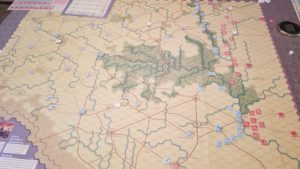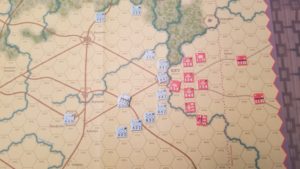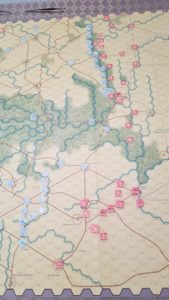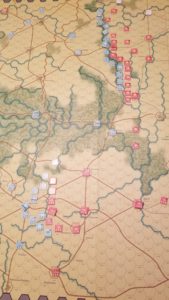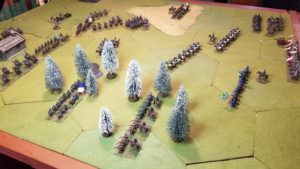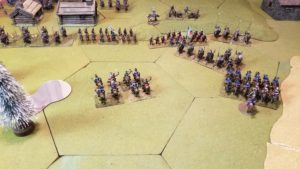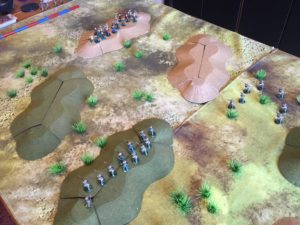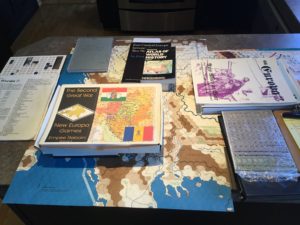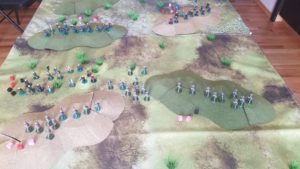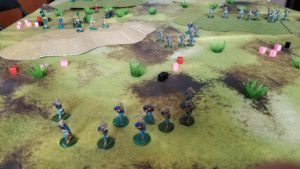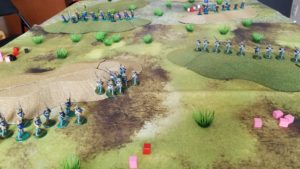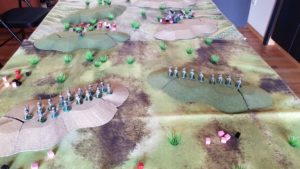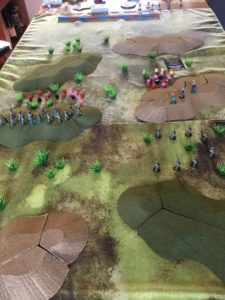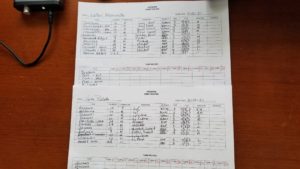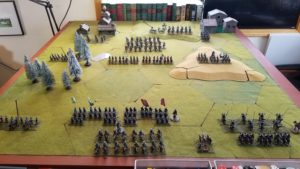Over the past couple of years I’ve become intrigued with paper soldiers, terrain and buildings as a low cost, lower time alternative that allows me to tryout intriguing new rule sets as well as an alternative to my ham-fisted DIY efforts.
I initially started out with paper buildings for my Fistful of Lead games.
My first paper soldiers were sourced through Wargame Vault using Batalov’s titles, as well as those created by “Antohammer”.
Earlier this year I discovered Peter’s Paperboys, featuring both Peter Dennis’ quality work and others.
Combining these low cost figures with (comparatively) low cost PDF rules opened up a number of possibilities, especially skirmish or small unit encounters, with quick set-up, small footprint and big fun.
Two new rule sets I’ve been working with that combine attributes of both skirmish and small unit (s) games are Osprey’s Pikeman’s Lament and The Men Who Would Be Kings. These sets have been exhaustively covered, so there’s no need to go into any discussion here.
The paper soldiers provide the ability not only to get into the rules, but create interesting matchups. For example: Portuguese vs. Spanish Conquistadors for “Lament” and Late 19th Century Russians vs. Central Asian Factions in “Kings”.
The overhead for each of these games was no more than $20 each, all-in with rules, figures, terrain and professional printing.
A bonus is that cutting out 28mm figures and terrain, as well as 15-18mm buildings gives me an excuse to have football on and not feel like I’m wasting time.
It was then just a short jump to WoFun’s 18mm plexiglass figures. This range also includes 28mm figures, with work by both Batalov, Dennis and others. Why 18mm? Because 18mm paper soldiers are just too hard to cut out.
Yes, the plexiglass figures are more expensive and postage from the UK is a drag (although some sets are available from US based Raven Banner Games).
I purchased British and a variety of African Askaris, Arabs and Tribal figures for skirmishes and a campaign using the “Men” rules.
I’m really enjoying this combination of interesting match-ups and quick set-ups.
